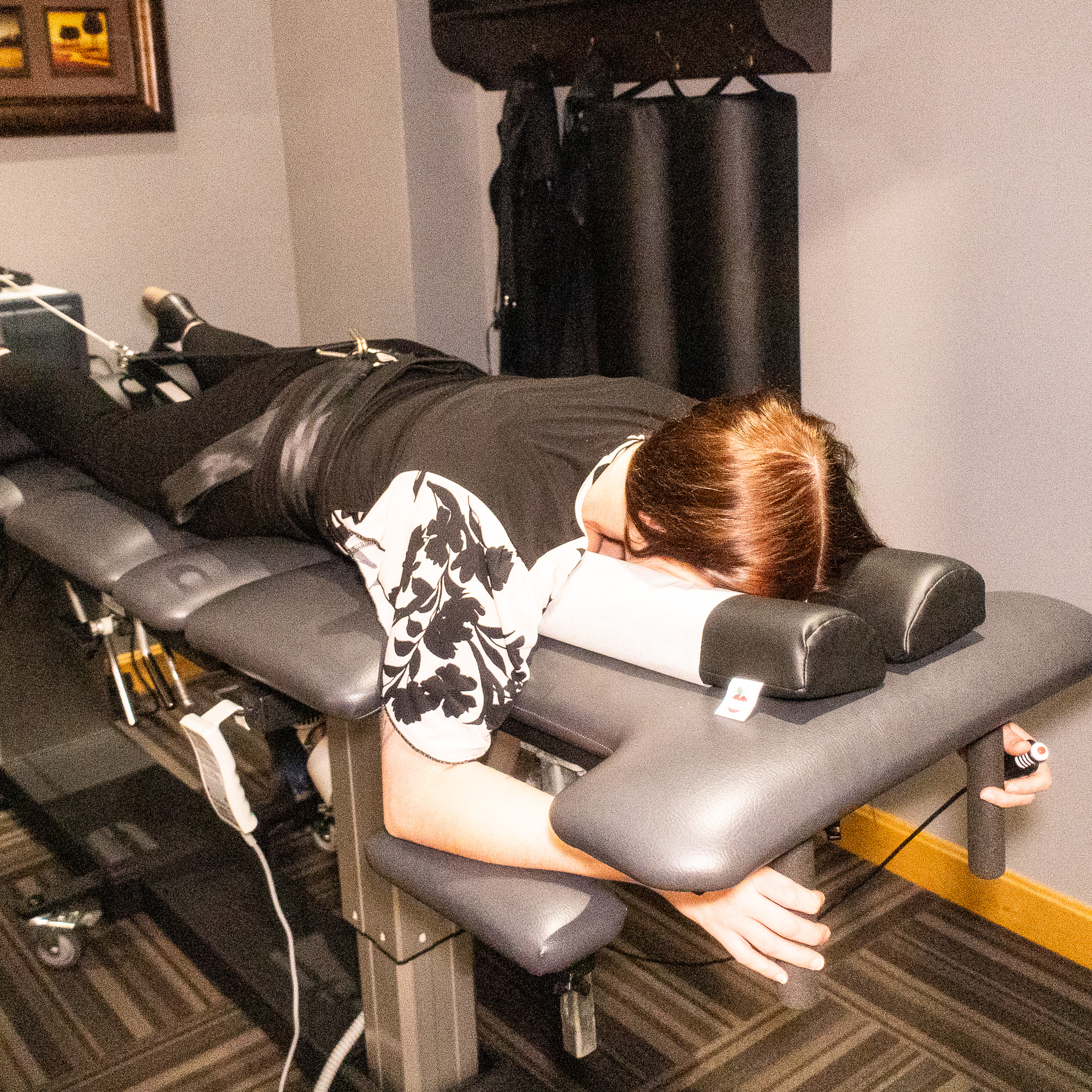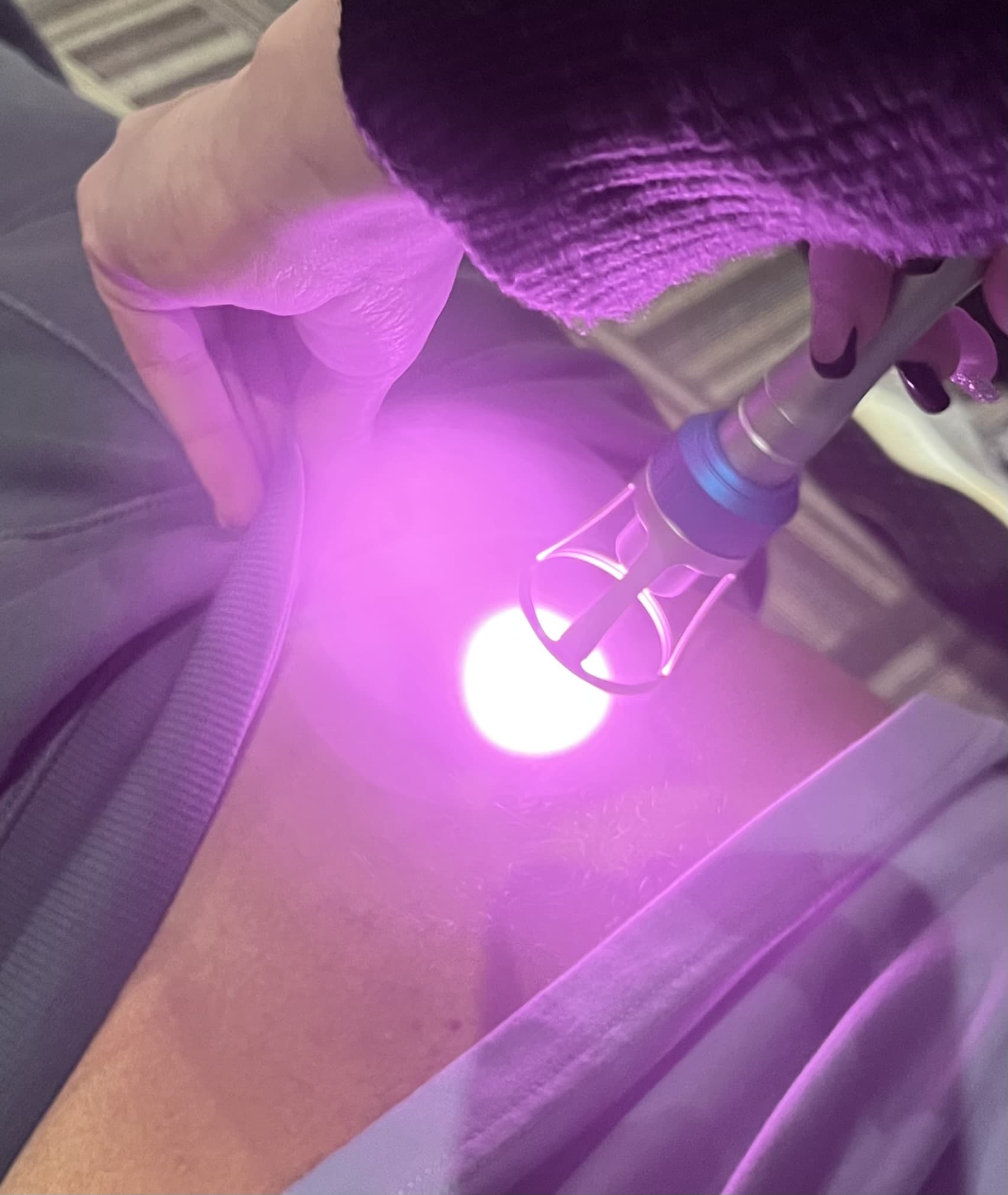Herniated Disc Treatment in Rhode Island | DeCrescenzo Chiropractic
Struggling with herniated disc pain? Our experienced chiropractors offer personalized, non-surgical treatments that bring lasting relief. Discover how our cutting-edge techniques can help you reclaim a pain-free life—schedule your consultation today!
Convenient Offices in: East Providence / Pawtucket / Providence / Central Falls
Relief from Herniated Disc Pain in Rhode Island
If you are suffering from the discomfort and pain of a herniated disc, DeCrescenzo Chiropractic is here to help. Serving patients across Rhode Island, our team of skilled chiropractors provides comprehensive care to relieve your pain and restore your quality of life.
What is a Herniated Disc?
A herniated disc, also known as a slipped or ruptured disc, occurs when the soft center of a spinal disc pushes through a tear in the more rigid outer layer. This can press on nearby nerves, causing pain, numbness, or weakness, often in the lower back or neck. Herniated discs can severely impact daily activities and mobility, but with proper care, relief is possible.
Expert Chiropractic Care for Herniated Disc in Rhode Island
At DeCrescenzo Chiropractic, we take a personalized approach to treating herniated discs. Our Rhode Island chiropractors are experienced in providing non-surgical, drug-free treatments that target the root cause of your pain. Whether you’re dealing with an acute injury or chronic discomfort, we are here to help you heal.

Decompression
Decompression therapy is a non-surgical treatment option that can help relieve pressure on the spinal discs, which is often the cause of herniated discs. This technique involves gently stretching the spine, creating negative pressure within the discs. This negative pressure can help retract the herniated disc material, alleviate pressure on nerves, and promote healing.

Class IV Hot Laser Therapy
Class IV Hot Laser Therapy is a non-invasive treatment option that uses high-intensity laser energy to stimulate healing and reduce inflammation caused by a herniated disc. The laser energy penetrates deep into the tissues, increasing blood circulation and promoting cellular regeneration. This can help reduce pain, numbness, and tingling associated with a herniated disc.

Shockwave Therapy
Shockwave therapy is an advanced treatment option that uses high-energy sound waves to stimulate healing and reduce pain caused by disc problems, including herniated discs. The sound waves create microtrauma in the affected tissues, triggering the body's natural healing response. This can help break down scar tissue, reduce inflammation, and promote the growth of new blood vessels, leading to long-term pain relief.

Electro Muscle Stimulation
Electro Muscle Stimulation (EMS) is a therapeutic technique that uses electrical impulses to stimulate muscle contractions. This can help strengthen the muscles supporting the spine, improving stability and reducing strain on the affected discs, which is often a factor with a herniated disc. EMS can also help improve blood circulation and reduce muscle spasms, further contributing to pain relief.
Common Symptoms of a Herniated Disc
Do you have a herniated disc? Here are some of the most common symptoms:
- Sharp or shooting pain in the back, neck, or legs
- Tingling or numbness in the limbs
- Muscle weakness in the arms or legs
- Difficulty standing or walking for extended periods
If you’re experiencing these symptoms, our chiropractic team in Rhode Island can thoroughly assess and create a personalized treatment plan.
Herniated Disc Treatment Across Rhode Island
At DeCrescenzo Chiropractic, we offer herniated disc treatment at East Providence, Pawtucket, Providence, and Central Falls locations. Whether you’re seeking care for lower back pain or neck pain caused by a herniated disc, our Rhode Island chiropractors are here to help you regain mobility and comfort.
Why Choose DeCrescenzo Chiropractic for Herniated Disc Treatment?
With decades of experience in chiropractic care, DeCrescenzo Chiropractic is dedicated to providing exceptional treatment for herniated discs and other spine-related conditions. Our comprehensive approach includes chiropractic adjustments, spinal decompression, and additional treatments to ensure long-term relief and recovery.
Frequently Asked Questions
Chiropractic care uses non-invasive techniques like spinal adjustments and decompression to relieve pressure on the affected disc and nerves, promoting healing and reducing pain.
The healing time varies depending on the severity of the disc injury and individual factors. Still, many patients feel relief after just a few weeks of consistent chiropractic care.
Yes, chiropractic treatment is a safe and effective option for treating herniated discs. Our chiropractors use gentle, precise adjustments to minimize discomfort while promoting recovery.
Contact Us for Herniated Disc Treatment in Rhode Island
If you’re suffering from the pain of a herniated disc, don’t wait any longer to seek relief. DeCrescenzo Chiropractic offers specialized care across Rhode Island, conveniently located in East Providence, Pawtucket, Providence, and Central Falls. Call us today to schedule your consultation and take the first step toward a pain-free life.

We offer Chiropractic Treatments across Rhode Island at our 4 convenient locations.
New Patients
Read Our Reviews
Deborah Holden
So my story:
I had a bad car accident back in 2017 that fractured my left wrist, one of my ribs, my neck seized up and couldent move it to the left, and did something to my lower back where later on it went out where it was consistently going out of alignment. Think of you back as an upside down T, as the ( --- ) is the hips/waist and the ( | ) as the spine. My Spine is a (《 ) and my hips is ( / ), higher on one side then the other. This has caused excessive pain at some points. 8 years later I'm still going for monthly maintenance to keep everything in check. My neck can move after a few treatments and I still get the "rice crispy cereal popping sound" but I don't think that'll ever go away but it's jot as loud and I can move my neck. My lower back is the stubborn problem at this point.
They started doing the shockwave therapy maybe a few years ago at this point and I was a difficult patient to get to try it with all the adjustments and the money I was spending when my back would flare up and really be out of alignment and sometimes have 3 visits a week. I gave in and started the shockwave which made them so happy, and myself after. It was night an day difference. Now I know if I have a flairup that option is there. Due to how well the shockwave treatment works, I have not had many flairups because it works. It breaks down the swelling, inflammation, scar tissue, increases blood flow...etc. My muscles are not pulling my waist as tight in one direction anymore.
Now my most recent issue which one would think why the Chiropractor for this. I woke up the other week and couldent walk on my foot. Thought I stepped wrong at work and pulled a muscle. Over a few days it swelled and got worse. I ended up calling the office to get in for Shockwave knowing it helped my back before. I had, and have, Edema in my right foot, ankle, and calf. It was swollen. Like a balloon. They did the shock and Dr Chris told me to still see my primary which I did and found the reason for it and treating that as well. The Shockwave therapy REMOVED AND DRAINED THE EDEMA!!!! It's not a one time fix due to the cause of the Edema but just had another treatment and still a few more to go. The progress is amazing. I'll upload the before and after pic and you can determine yourself. It's just WOW!
Like i said, I love the treatment, the staff, and I'll continue to come here because if it wasn't for them, I'd be falling apart more then I am now. They keep me tuned up.
(Sorry the after pic of my un swollen foot doesn't show much of the ankle)


